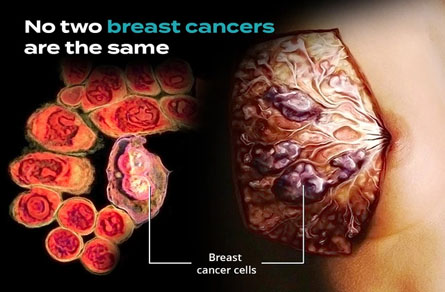Breast cancer
•1 out of 8 women will develop breast cancer (lifetime risk)
•1 in 227: birth to age 39
•1 in 25: ages 40-59
•1 in 15: ages 60-79
•Detection: mammograms, regular breast self-exams
•Symptoms: lump in the breast, thickening, dimpling, skin irritation, distortion or tenderness
•Risk factors: family history, hyperplasia, long menstrual history, obesity after menopause, oral contraceptives
•Treatment: lumpectomy, radical mastectomy, radiation, chemotherapy
•Prevention: exercise
Risk Factors
Age
- Uncommon below the age of 35
- Incidence increased rapidly between ages of 35 and 50
- There is a dip in incidence at the time of menopause
- A secondary rise in frequency occurs after the age of 65
- Women who developed their first breast cancer under the age of 40 have 3 times the risk of developing a second breast cancer
- Mean age of occurrence in Indian women is 42
Family history
- High in those with positive history in their family
- Esp. if mother or sister has developed breast cancer when premenopausal
Parity
- Related to age at which women bear their first child
- Those who had their first child in the late thirties are at a higher risk than multiparous women
- Unmarried women tend to have more breast tumors than married
- Single women and nulliparous women have the same risk
Prevention
Primary Prevention
- Aim should be towards elimination of risk factors
- Promotion of cancer education
- Increase the average of menarche by reducing childhood obesity and increased stannous physical activities
- Or decrease the frequency of ovulation by increased stannous physical activities
Secondary Prevention
- Screening leads to early diagnosis which influences treatment
- To detect recurrence as early as possible
- To detect cancer in opposite breast at an early stage
- To generate research data that might be usefull


